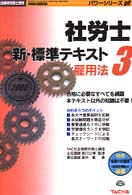Full Description
A much-needed resource for helping teachers assess the increasing number of diverse students and English learners in today's K-12 classrooms, Assessment Accommodations for Classroom Teachers of Culturally and Linguistically Diverse Students details effective classroom assessment practices and organizes recommended strategies around the four critical dimensions of the CLD student biography: the sociocultural, linguistic, academic, and cognitive dimensions. Written from the perspective of a differential lens on assessment practices for CLD students, the book focuses on the student as the driving force behind its narrative and organization and examines the Who, Where, What, When, and How of using appropriate assessment practices with CLD students.
Contents
Preface About the Authors Chapter 1 Classroom Assessment amidst Cultural and Linguistic Diversity What's Different about Today's Classroom? Immigration Fallacies and Facts The Next Generation Of Students: America's PotentialWhat's Changed about the Readiness of Classroom Teachers for Student Diversity? What's Evolved about Appropriate Assessment Practices for CLD Students? Chapter 2 Authentic Assessment Rationale for the Use of Authentic Assessments Reliability and Validity of Authentic Assessments Types of Authentic Assessment Performance-Based Assessments Portfolios Self-Assessment and Peer Assessment Interview-Based Assessment Play-Based Assessment Cooperative Group Assessment Dialogue Journals and Scaffolded Essays Scoring and Related Issues of Authentic Assessment Rubrics Checklists and Questionnaires Additional Considerations Chapter 3 Response to Intervention, Preinstructional Assessment, and the CLD Student What Is Response To Intervention? What Does RTI Look Like?Tiers of RTI InstructionPreinstructional AssessmentFormal and Informal PreassessmentHistory/Herstory: What the CLD Student Brings to the Classroom Biopsychosocial History of the CLD Student Education History of the CLD Student Language History of the CLD Student Preassessment Resources: Home Visits and School Conferences Chapter 4 Assessment of Acculturation Acculturation and Enculturation Processes When What Used to Work No Longer Works Acculturation Dynamics Relationship between Cultural Identity and Acculturation The Role of Acculturation and Emotions in Learning Assessing Level of Acculturation Informal Assessment of Acculturation Formal Assessment of Acculturation Impact of Acculturation on Appropriate Methods of Assessment Using Acculturation Information to Inform Instruction Cultural Differences as Learning Assets Programming-Related Issues: Assessment of Acculturation Identification Placement Monitoring Exit Chapter 5 Assessment of Language ProficiencyRationale for Language Proficiency Assessment Rationale for Assessing Primary Language Proficiency Rationale for Assessing English as a Second Language Key Elements of Language Acquisition and Proficiency Syntax Morphology Phonology Semantics Pragmatics Informal Assessment of Language Proficiency Key Issues in Informal Assessment Home Language Surveys Parent Interviews Informal Assessment of Academic Language Proficiency Formal Assessment of Language Proficiency Standardized Formal Assessments of Language Proficiency Further Considerations Programming-Related Issues: Language Proficiency Assessment Identification Placement Monitoring Exit Chapter 6 Assessment of Content-Area Learning Formative Content-Area Assessment Informal Formative Assessment Formal Formative Assessment Summative Content-Area Assessment Informal Summative Assessment: Portfolios as Authentic Assessments Formal Summative Assessment: High-Stakes Tests The Role of Language in Content-Area Assessment Bias in Classroom-Based Content-Area Assessments Programming-Related Issues: Content-Area Assessment Identification Placement Monitoring Exit Chapter 7 Special Education Issues in the Assessment of CLD Students What Is Special Education? Is Disproportionality Really an Issue? Why Should We Be Concerned? Implications for Classroom Teachers The Importance of Information: Review and Request Preassessment for Special Education Attention to the Assessment Process Reevaluation Considerations Chapter 8 Postinstructional Assessment Teacher-Driven Postinstructional Assessment Linguistic Postinstructional Assessment Academic Postinstructional Assessment Cognitive Postinstructional Assessment Sociocultural Postinstructional Assessment But What about the Grade? Conclusion Appendix: Appendix A: TESOL Standards of Best PracticeAppendix B: Teacher ResourcesGlossary References Index








